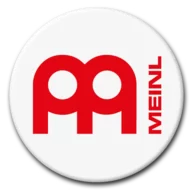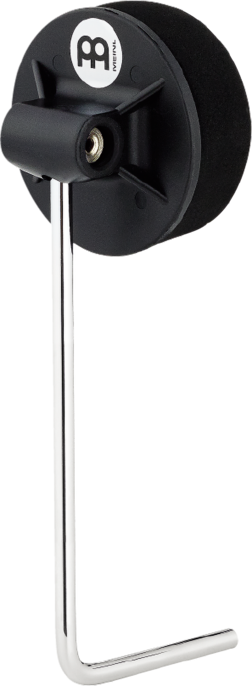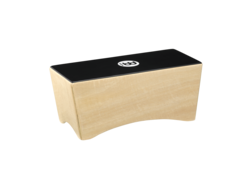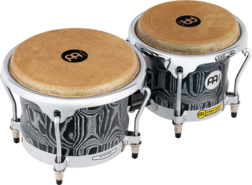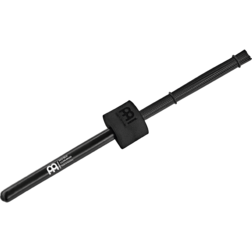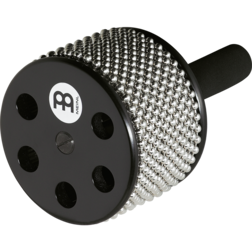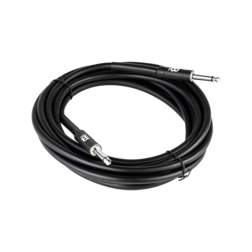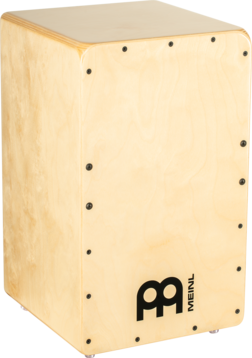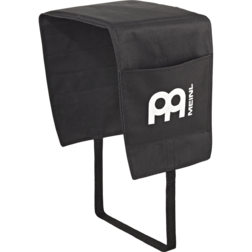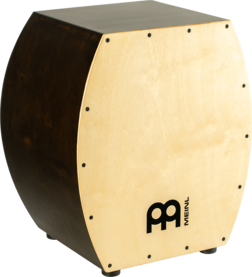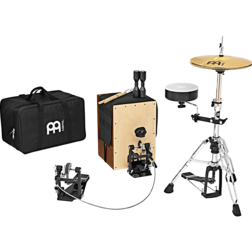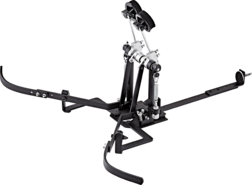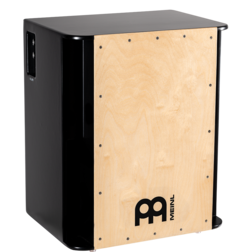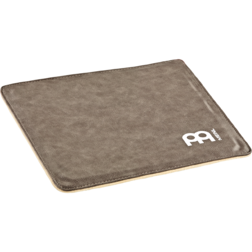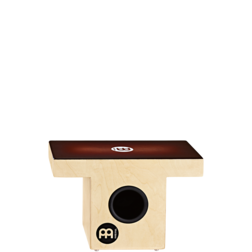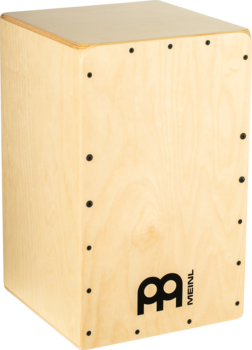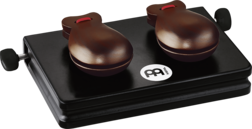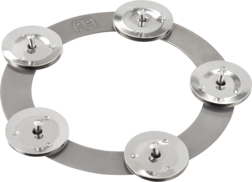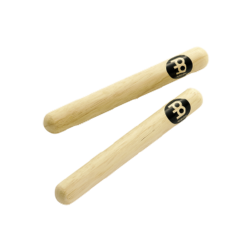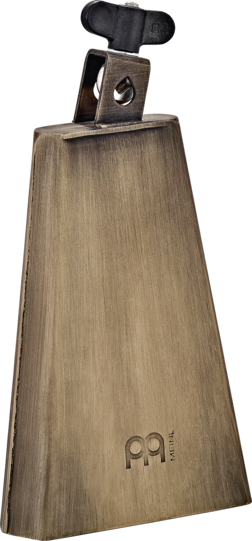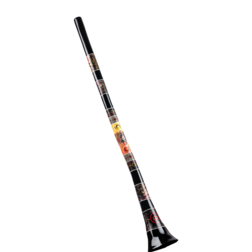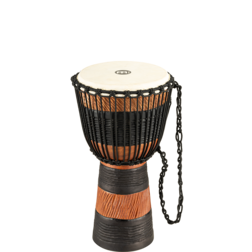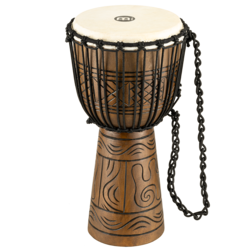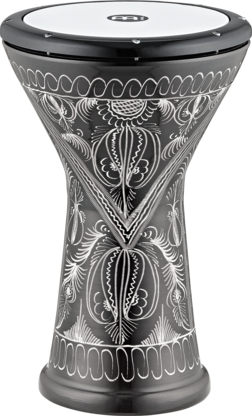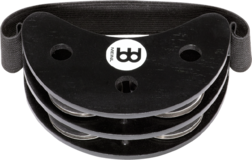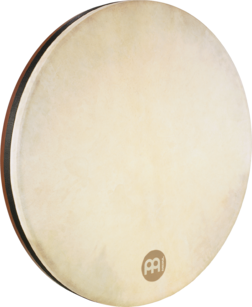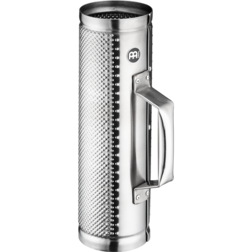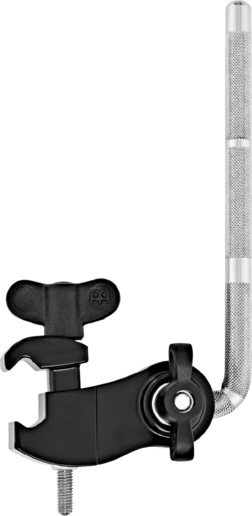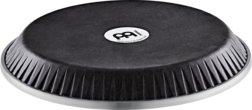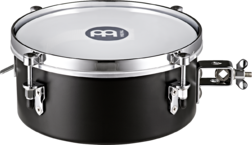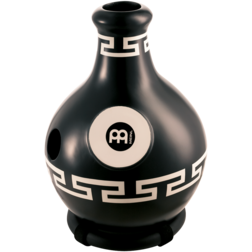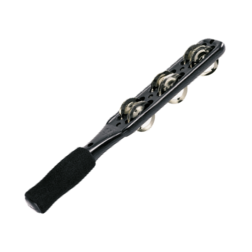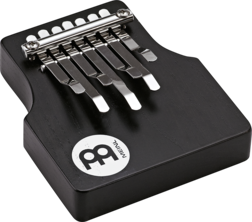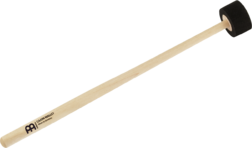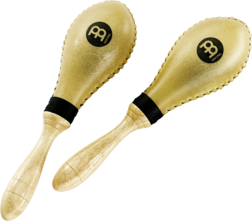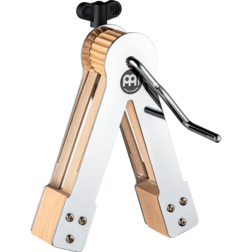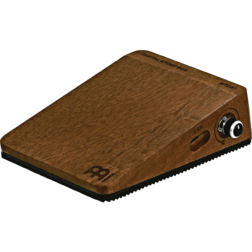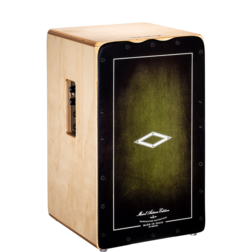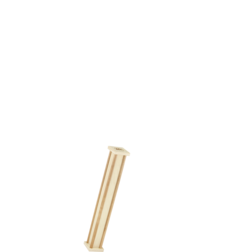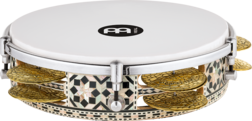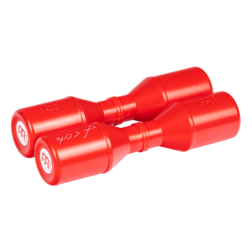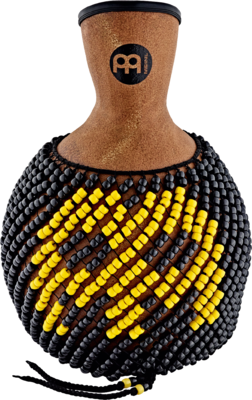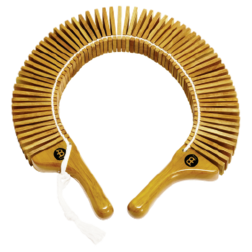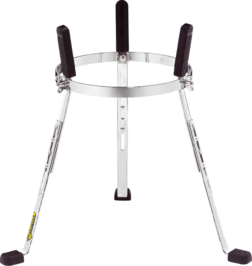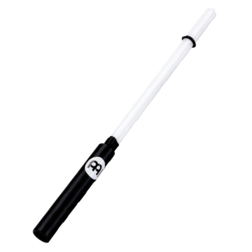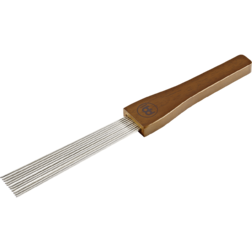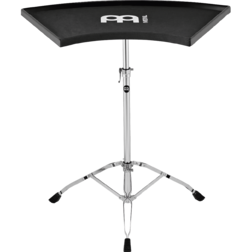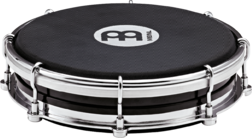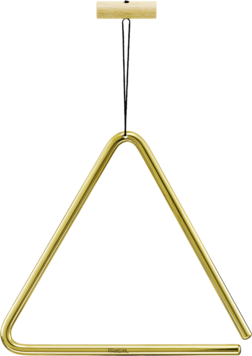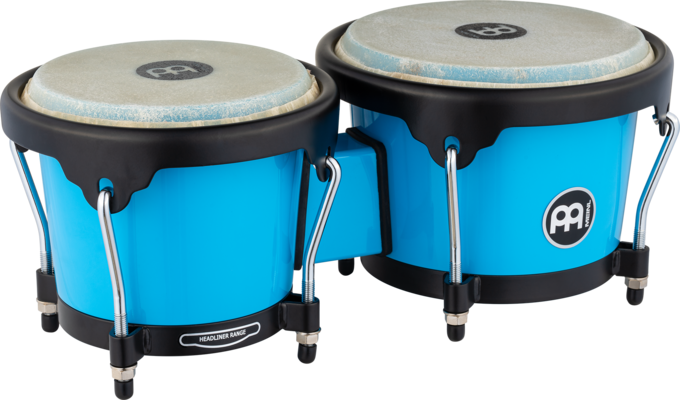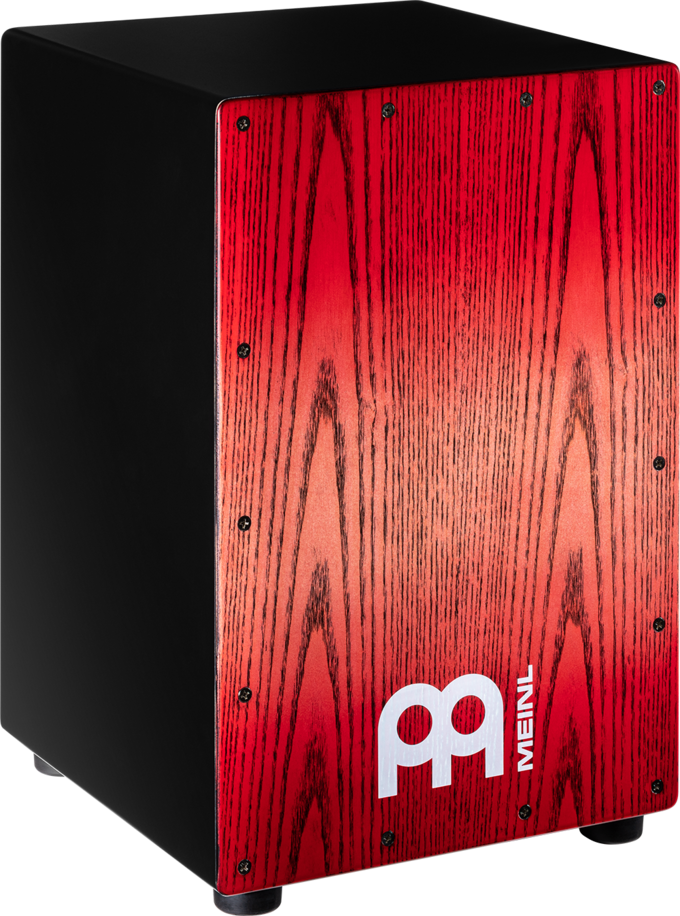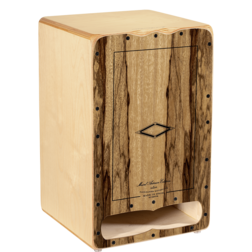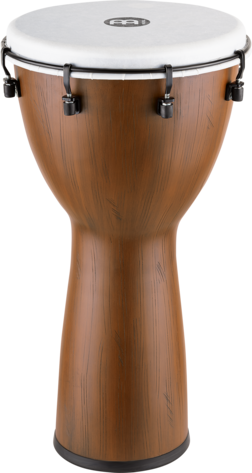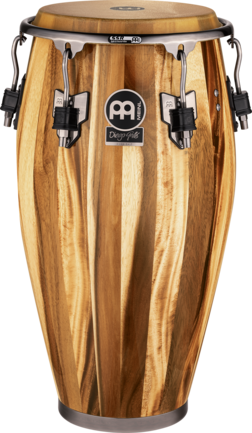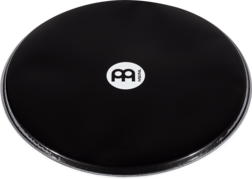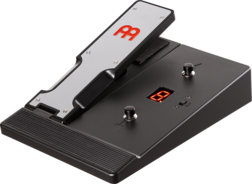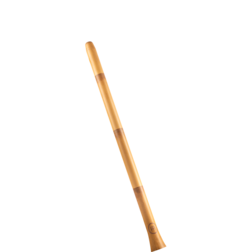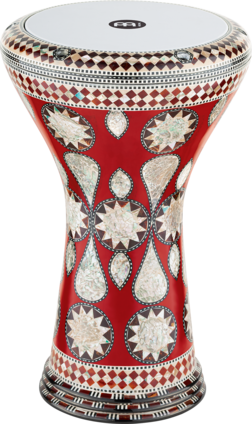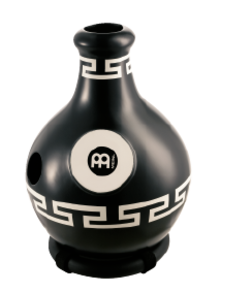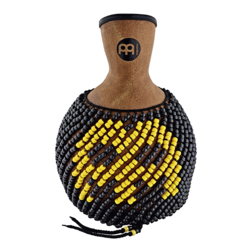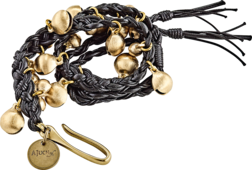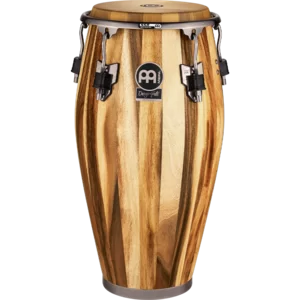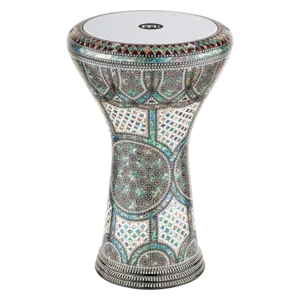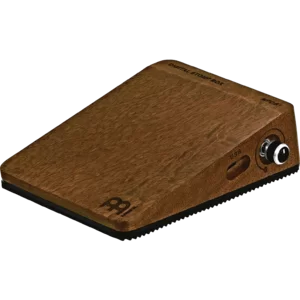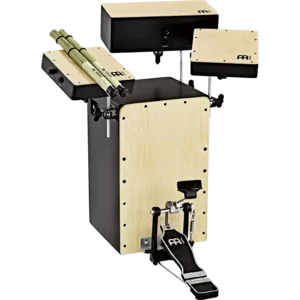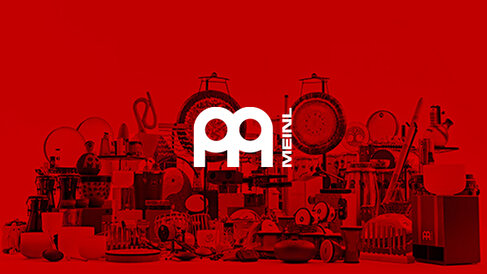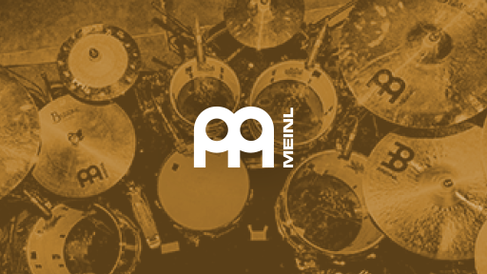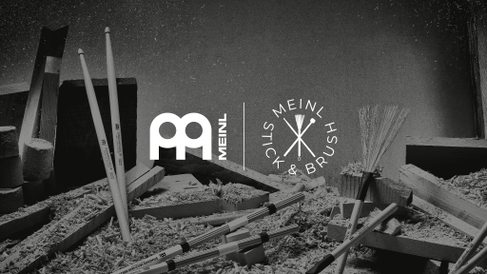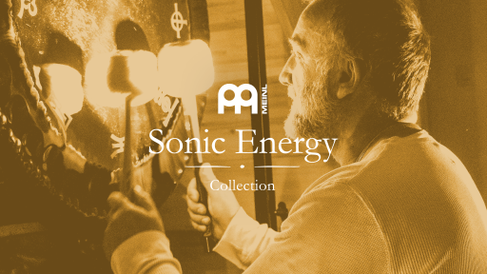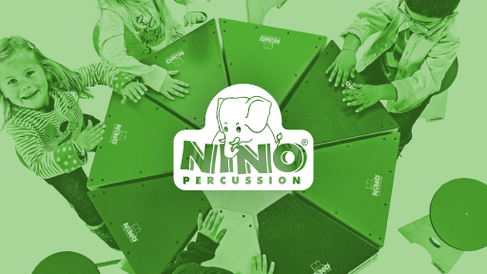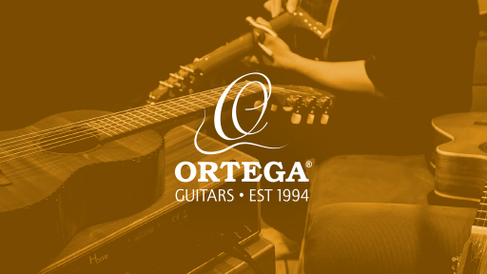MEINL Percussion WIKI
#
Meinl's success is not only based on our actions but also depends on many other factors: our employees, the musicians, the suppliers, the dealers, and, of course, the customers.
A
The abbreviation ABS stands for acrylonitrile-butadiene-styrene—a commonly utilized plastic material. ABS plastics are among the most widely used plastics in the world. They are used in numerous household and consumer products, as well as in the manufacturing and music industry.
Agogô (Yoruba language) is a percussion idiophone in the music of the Yoruba, Igala, and Edo peoples of Nigeria, consisting of two elongated cone-shaped metal bells connected by a bracket. From Nigeria, the agogô eventually reached South America in Brazilian and Cuban music.
Ajuch Bells are small cast brass bells attached to a rope or cord in different sizes for different tones. They are mostly used in drum sets, wrapped around the tops of cymbals to generate layers of sound. They are also used by percussionists in modern and creative setups.
Instead of the classical straight edges, the MEINL Percussion Arch Bass Cajon has a body that is reminiscent of a barrel construction. The bell-like shape allows for a clearer separation between slap and bass sound.
An artisan is a skilled craft worker who makes or creates material objects partly or entirely by hand. At MEINL Percussion, Artisan Edition instruments are of the highest quality of their kind. They are characterized by the most accurate workmanship and the best sound.
These are signature instruments that MEINL Percussion has worked out together with renowned musicians.
B
The Backbeat Tambourine can be positioned on a snare drum head or floor tom. When hitting striking your drum, the jingles of the Backbeat Tambourine are activated and add a shimmering sound.
Bahia, Brazeil is the birthplace of many noted Brazilian artists, writers and musicians. Samba is widely popular in this region. Bahia Surdos usually feature a smaller shell and have a shorter resonance than other surdo models.
A batá drum is an obscure hourglass-shaped drum used in Yoruba cult music in Nigeria and Benin, and it's also used in the African American Santería religion in the Caribbean.
They are fitted with rawhide heads on both sides. The batá drums of the Lucumí, the descendants of the Yoruba in Cuba, are particularly well known. They are mainly played during ceremonies in honor of African deities, but since the 1950s they have also been used for non-religious occasions.
A bell tree, also known as the Chinese bell tree, is a percussion instrument consisting of vertically nested inverted metal bowls. The bowls are placed on a vertical rod and arranged roughly in order of pitch. By sliding down with a triangle beater, the instrument produces a bright glissando.
The bendir is a frame drum of North Africa and Southwest Asia. The bendir is a traditional instrument that is played throughout North Africa, as well as in Sufi ceremonies; it was played, too, in Ancient Egypt and Mesopotamia. In Turkish, the word bendir means "a big hand frame drum".
The berimbau is a musical bow from northeast Brazil. In the southern region of the country, it's called Urucungu. The string carrier consists of a bent stick, to which both ends of the wire are attached as a string to a cut-open, hollowed-out bottle gourd, which is attached as a resonator to the lower third of the bow above the string and bow.
The bodhrán is an Irish frame drum. The frame is covered with a rawhide (often goatskin) and reinforced with a cross if necessary.
The Bongo Cajon is a Cajon based on the concept of a Bongo. In other words, a fusion of the two. The Bongo Cajon has a low and a high tone just like traditional bongos but with a woody sound of a cajon.
C
The Cabasa or Cabaça (Portuguese: bottle gourd) is a percussion instrument from Latin America. The Afro-Brazilian archetype of the vessel rattle consists of the fruit body of a bottle gourd, to which a handle is attached. The surface of the calabash is covered with a net of fruit seeds or beads. The modern Cabasa is derived from the original instrument called Afuche ('gourd rattle'). It is composed of a wooden or plastic handle with a cylindrical head and a surrounding profiled sheet. The sheet metal is studded with close-fitting metal bead chains, which enables precise percussive sounds.
The Caixa is the Brazilian variant of the snare or marching drum. This drum is also called Tarol, Malacacheta, or Caixa de Guerra in different musical styles. The Caixa is an important instrument in Brazilian Samba, Samba Reggae, Maracatu, and other rhythmic styles, where it provides the bright rhythmic foundation for the Bateria (rhythm section).
The Meinl Candela Series Cymbals are cymbals specifically designed with percussionists in mind. They are thin and easy to play with brushes, rods or by hand.
Castanets (after the French word castagnettes, Spanish castañuelas) are shell-shaped, usually wooden clappers about five centimeters in diameter to be played in pairs, intended for rhythmic accompaniment.
The Caxixi is a vessel rattle woven from bast fibre and filled with pebbles or seeds. A calabash disc is incorporated into the bottom of the caxixi. The caxixi is moved up and down or twisted when played so the filling hits either the bottom or the basket. Depending on the way it's played, a high, sharp, soft or deep tone can be achieved.
Ching rings are small metal rings with tambourine jingles attached. They are perfect for creating new sounds on the drum kit or percussion set. Ching Rings are usually placed directly on hihats, ride or crash cymbals.
Claves, also called rumba woods, are wooden percussion rods used in pairs to create a sharp tone that accents or defines rhythmic patterns. These two round wooden rods of equal length, popularized by Latin American music, produce a dry, cutting sound.
Conga Savers are placed over conga lugs to prevent them from damaging and scratching the shell while the conga remains fully tunable.
Conguitas are Mini Congas that are more transportable than their bigger brothers. They can complement a conga set or be played on their own.
The Meinl Percussion Crasher is an accessory for drummers or percussionists looking to add a short, cutting sound to their setup. It can also be played like a Guiro.
The Cuíca is a friction drum used in Brazilian music. It usually consists of a metal cylinder covered with a leather head on one side. A small bamboo stick is embedded into the leather where players can use it to create unique percussion effects.
D
The daf ( also daff, deff, def, tef, duff) is the regional name for various frame drums that are found in music from from the Middle East, southern Central Asia, and India through the Arab countries westward of The Maghreb and southeastern Europe. There are versions with and without jingles or metal rings loosely attached to the inner surface of the frame.
The Darbuka (also called darbukka, darbouka, derbouka, or darabukka) is a single-headed goblet-shaped drum from the Middle East and Arab North Africa.
The Didgeridoo is an overtone-rich wind instrument from the aerophone family based on the tone-generating principle of the cushion pipe and is considered a traditional musical instrument of the North Australian Aborigines. The tonal and rhythmic variety is created by combinations of mouth movements, breathing techniques, and voice effects, based on a fundamental tone that varies only slightly in pitch and overblown notes.
The Doumbek (also Goblet Drum, Chalice Drum, Tarabuka, Tarabaki, Darbuka, Derbake, Debuka, Doumbek, Dumbec, Dumbeg, Dumbelek, Toumperleki, Tumbak, or Zerbaghali) is a single head drum with a goblet-shaped body used mostly in Egypt. It is considered the National symbol of Egyptian Shaabi Music.
The Meinl Drum Honey is a set of gel dampening pads that can be placed on any drum or cymbal to reduce ring and overtones.
F
Instead of using snare wires inside the Cajon, the Flamenco Cajon is equipped with guitar strings to create a more airy, crisp sound. You can find these guitar strings inside the Meinl Percussion Artisan and Woodcraft Cajons.
The Meinl Floatune Tuning System is a tried-and-true Meinl innovation. With this system, all mounting hardware is completely isolated from the shell. This avoids the need to drill through the shell and mount hardware with bolts, which reduces the resonant vibrations of the shell. The Floatune Tuning System is used for our Floatunes Series Congas.
G
The Ganzá is a Brazilian rattle percussion instrument, especially used in Samba music.
The Ganzá is cylindrically shaped and filled with beads, metal balls, pebbles, or other similar items. Those made from metal produce a particularly loud sound. They are usually used to play a rhythm underneath the rest of the band.
The Güira is a metal scraper from the Dominican Republic used as a percussion instrument in Merengue and, to a lesser extent, other genres such as Bachata.
The Güiro, or Guiro, (Spanish, "bottle gourd") is a long and hollow percussion instrument made of wood or metal with a ridged surface where a stick or scraper is dragged across. The guiro is common in musical styles of Central America.
H
The Meinl Percussion Headliner Series are Meinl Percussion instruments geared toward entry level players. They are perfect for beginners to learn an instrument, featuring many professional features at an affordable price.
Hihat Tambourines are mounted directly to hihat pull rods to deliver jingle sounds when you play with your hihat foot. Steel and brass are the most common metals used for the jingles in these instruments.
These Native-American Frame Drums have a hand-selected buffalo head for an authentic sound that is both warm and powerful. The skin is pulled around the back and laced across the middle for a traditional, yet adjustable grip.
I
Udu Drums originated among the Igbo (Ibo) people of South East Nigeria. It is an ancient utility vessel that has evolved into a popular percussion instrument. The Udu that evolved from the village communities was used in music orchestras, accompanied female dancers, and in storytelling with songs.
K
Also known as the Thumb Piano, Kalimbas create soothing melodic tones and are tuned to a specific scale where all the notes complement each other—this means you will never play a wrong note.
The Kanjira (Khanjira, Khanjiri or Ganjira) is a South Indian frame drum from the tambourine family. As a folk and Bhajan instrument, it has been used in India for many centuries. It was modified to a frame drum with a single pair of jingles by Manpoondia Pillai in the 1880s, who are credited with bringing the instrument to the classical stage.
Based on the traditional Japanese Kokiriko, this instrument creates the sound effect of "dominoes falling" as the wooden slats strike one another. Holding a handle in each hand and using an up and down movement with alternating motions produces a clacking sound.
L
Meinl Percussion lists under Latin Instruments all percussion instruments that are typically and mainly played in Latin America, such as congas, bongos and timbales.
M
The Meinl Magnetic Sustain Control is a unique and easy way to vary the sound of cymbals, cowbells or other metal percussion instruments. By positioning magnets in different spots on the surface of your instrument, the sustain, tone and volume can be controlled.
A mallet (or beater) is an object used to strike a percussion instrument in order to produce its sound. Mallet heads can be made of different materials such as rubber or felt.
Maracas are South and Central American percussion rattles that belong to the idiophone group. This percussion instrument consists of a hollow body with a granular filling. A handle or stem is attached to the body.
Marathon Series instruments are the next level of Meinl Percussion instruments after the Headliner Series. They are especially suitable for professional and semi-professional players.
Conventional djembes have a rope tuning system. These djembes, on the other hand, can be tightened mechanically by a tuning key and are effortless to handle and retune. This saves a lot of time and is also a great feature for beginner players.
Meinl’s patented Free Ride Suspension System, which comes standard on Marathon and Designer Series Bongos, connects the Macho and Hembra without drilling any holes into the shells of the drums. This results in enhanced resonance, as the wood shells are uninhibited to vibrate freely. The Free Ride System is easy to spot; just look for the connection in the shape of a Meinl logo between the two drums.
Meinl Percussion has made high-quality video productions of Meinl Artists and their performances in their studio at the Gutenstetten location. All of these videos belong to the Meinl Percussion Studio Sessions.
Instead of using snare wires inside the Cajon, the Flamenco Cajon is equipped with guitar strings to create a more airy, crisp sound. You can find these guitar strings inside the Meinl Percussion Artisan and Woodcraft Cajons.
Meinl Percussion offers some instruments, such as congas, bongos, cajons, in miniature sizes. The typical features were reproduced in great detail to replicate the standard version in a fun and novel size.
Originating from Syria, this instrument provides a great rhythmic foundation in any percussion ensemble. For the Artisan Edition Mizhars, Meinl Percussion uses the highest quality natural skins, which provide a consistent, warm tone and excellent response due to their uniform thickness. All sizes are also available with weather resistant true feel synthetic heads.
This is a clamp, mostly made of steel, to attach any percussion add-on like cowbells or tambourines to an existing setup. One side of the Multi-clamp is mounted on a cymbal stand, and the other side features an eye-bolt mount where the player can insert a percussion rod on which the instrument is attached.
P
The Pandeiro is a small frame drum with a ring of jingles played in Brazilian music. The slightly curved jingles create a clanging sound, similar to the sound of a hi-hat on a drum kit. The pandeiro offers a great variety of sound possibilities.
José Hernández Díaz, also known as "Pepote" is a well-known Spanish Cajon luthier with unique skills to master his instruments to perfection. Pepote hand crafts all Artisan Edition Cajons for Meinl Percussion.
The traditional Afro-Peruvian Cajon features no snare mechanism for an open, boomy sound. A sharp, woody slap effect is achieved by a narrow gap between the striking surface and the body at the top edge.
These are instruments that have been fitted with a pickup to get even more volume by plugging into an amplifier or PA system.
Piezo pickups are suitable for use on all acoustic instruments and are widely used in Meinl Percussion pickup instruments.
The Pandereta Plenera (Pandero Plenero or Plenera) is a handheld frame drum typical of Puerto Rican music. A group of these drums is commonly used in traditional Puerto Rican Plena music. There are three general sizes: Primo or Quinto (for solos and lead), Segundo or Seguidor, and Tercero, Bajo or Tumbador (for rhythm and bass), although sizes can vary.
R
The Rainmaker or Rainstick is a tubular vessel rattle used as an effect instrument. The Rainmaker originates from the north of Chile. Its origin is the very dry Atacama region, where it was first built and used for rain ceremonies by the Diaguitas Indians in the Elqui Valley.
Meinl's Radial Ply Construction (RAPC) has been adopted from traditional drum shell construction techniques. It uses several thin layers of wood that are molded together to create a super-strong shell that is lighter and more resonant.
The Rebolo is a Brazilian ensemble drum with warm, deep tones. At Meinl Percussion, it comes with a Napa head and is usually played in a seated position.
The Repinique (also Repique) is a small drum from Brazilian percussion used in Samba and Sambareggae. It is played with a mallet and a bare hand or with two thin wooden or plastic sticks and is often used for "calls" because of its high-pitched sound.
Rim Clamps are clamps for drum or percussion rims to attach other instruments such as cowbells or even microphones. The advantage is mainly space-saving because no extra stands are needed.
The Riq is an Arabic single-headed frame drum. The Riq is mainly used in Arabic folk music, classical Arabic music and to accompany Oriental dance.
The Rocar is usually a metal frame in which bells can move freely back and forth on small metal rods. The Rocar is shaken and produces a loud and bright sound. It is widely used by the drummers of the samba formation called Bateria where it is important the metal bells strike the front and back in quick alternation to produce a precise percussive sound without rattling or ringing.
The conventional way of tuning a Djembe head is the rope tuning technique. First, the skin is placed on the Djembe. Then a tight ring of rope is placed around it to form a stable frame. Vertical ropes are attached to this ring at regular intervals to add tension to the skin.
S
In Samba, the following instruments are mainly used: Surdo, Caixa, Repinique, Tamborim, Ago-Go, Ganzá, and Timba. Of course, many other instruments can be added as effects. Samba music is often played in street celebrations like Carnival in Brazil.
The Shékere or Chekere is an Afro-American rattle from West Africa that has become a mainstream instrument in Latin-influenced music. There are many different names for the Shekere. The body consists of a calabash, which is an emptied, dry and hard gourd fruit. This serves as the resonating body where a net of beads or plastic balls is stretched across. Modern shekeres often have a more resistant body made of fiberglass.
In Meinl's patented T-shaped Slaptop Cajon, the playing surface has moved from the classic vertical position to a horizontal position. This means you can play comfortably while seated upright by simply holding the instrument between both legs.
A sleigh bell (or jingle bell) is a type of bell that produces a rich 'jingle' sound most associated with the holiday season. Sleigh bells find use in many areas as a percussion instrument, adding layers of sound or to accent rhythms.
Snarecraft Cajons from Meinl Percussion feature internal sets of snare wires, the same type you would find on a snare drum. These snares are fixed on standard models and can be adjusted on Snarecraft Professional Cajons by way of a foot pedal or knob throw-off.
The Safe & Sound-Rim (SSR) is used by Meinl Percussion for Congas and Bongos. This new generation of drum rims is rounded for player comfort.
The Steely Stand is patented by Meinl Percussion and is mainly used to safely hold congas or djembes. This model is quite widespread in the market and used by many percussionists.
The Meinl Subwoofer Cajon features forward-projecting sound ports in place of the traditional rear facing style and an internal reflex channel. This results in an enhanced bass tone projection, particularly desirable for live and unplugged situations.
T
The Tabla is a percussion instrument from North India. It consists of two small shell drums whose heads have a characteristic circular eye and are played with the fingers. The Tabla is played in Hindustani classical music as well as folk and religious music, mainly in India, Pakistan and Bangladesh. In Afghan music, the Tabla is a widely used rhythm instrument. Since the 1960s, it has also been used in Western pop and jazz because of its sound.
Many Talking Drums have an hourglass-shaped body and are covered with two skins connected by leather cords. The drum is held under the arm and played with a special crook. By tensing and releasing the upper arm, the pitch can be changed via the leather cords. The Talking Drum has its origin in Western Africa.
The Tambora is a cylinder drum from the Dominican Republic used mainly in merengue. Traditionally, the instrument is played lying on the lap—one side with a drumstick, the other with the bare hand.
Based on the idea of percussionist José Cortijo, the fusion of Tamborim and Pandeiro has succeeded here. The basis is provided by a 6" tamborim, whose wooden frame is equipped with the Floatune tuning system. The plastic head is tightened hard via eight miniature claws. The Tampeiro is patented from Meinl Percussion.
The Tantam is typically played in Pagode, a specific genre of Samba. One hand plays the Napa head while a stick is used to play counterpoint on the shell of the drum.
The Timba (more rarely: Timbal or Timbau) is a hand drum of Brazilian music. The conical body of the Timba is made of lacquered wood, and the head is usually made of plastic. The drum is commonly carried with a shoulder strap and played hanging in front of the torso.
Timbales, singular Timbal, are a pair of Cuban (originally Creole) drums made of metal shells (usually copper, brass, or steel). These drums do not have a resonating head, and they are typically attached to a stand to which one or more cowbells and other percussion accessories are added.
The Tongo Carved Djembes are made from a solid piece of mahogany wood and contain beautiful, authentic ornamental carvings.
The True Feel Meinl Head is a synthetic and robust head for different drums at Meinl Percussion such as Hand Drums.
Traditional Tuning Rims (TTR), fit very tightly to the drum body, allowing for steep and tightly fitting skin collars. Contrary to the SSR Rims, TTR Rims are a more traditional design than rounded SSR rims.
W
Woodcraft at Meinl Percussion stands for the highest quality instruments using wood as body material. Meinl Percussion offers Woodcraft Congas and Woodcraft Cajons.
